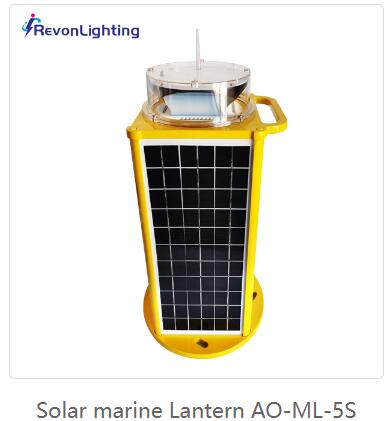Posted: 2024-08-01
Solar marine lantern is an innovative and environmentally friendly solution for marine navigation, offering reliable and sustainable lighting for buoys, docks, and other nautical markers. These lanterns harness solar energy to provide illumination, making them an ideal choice for maritime safety and efficiency.
Applications
Solar marine lanterns are used in a variety of marine environments, including coastal areas, harbors, rivers, and offshore platforms. They are crucial for marking navigational routes, indicating hazards, and ensuring safe passage for vessels. By providing clear and consistent lighting, solar marine lanterns help prevent accidents and facilitate smooth maritime operations.
Technology and Features
Modern solar marine lanterns are equipped with advanced technology to maximize their efficiency and durability. They typically feature high-efficiency solar panels that convert sunlight into electrical energy, which is stored in rechargeable batteries. These batteries power the LED lights, ensuring that the lanterns remain operational even during periods of low sunlight. LED technology is preferred for its energy efficiency, brightness, and long lifespan.

Many solar marine lanterns also come with smart features, such as automatic on/off functions that activate the lights at dusk and turn them off at dawn. Some models are equipped with GPS synchronization, ensuring that multiple lanterns flash in unison, which enhances visibility and navigational accuracy. Additionally, the lanterns are designed to withstand harsh marine conditions, including saltwater, wind, and extreme temperatures, ensuring long-term reliability.
Benefits
The use of solar marine lanterns offers several significant benefits:
| 1-3nm | 4-5nm |
| 5-7nm | 8-11nm |
Environmental Sustainability: By harnessing solar energy, these lanterns reduce the reliance on fossil fuels, minimizing carbon emissions and contributing to environmental conservation.
Cost Efficiency: Solar marine lanterns have low operational costs since they use free solar energy. They also require minimal maintenance, reducing the overall expenses associated with marine navigation aids.
Reliability: With advanced battery technology and durable construction, solar marine lanterns provide consistent and reliable lighting, essential for safe maritime navigation.
Ease of Installation: These lanterns are relatively easy to install, with no need for complex wiring or infrastructure. This makes them a practical solution for remote or difficult-to-access locations.
Challenges
Despite their numerous advantages, solar marine lanterns do face some challenges. Their performance can be affected by prolonged periods of cloudy weather or insufficient sunlight, potentially reducing their operational time. However, advancements in battery technology and solar panel efficiency are continually improving their reliability. Regular maintenance, such as cleaning the solar panels and checking the batteries, can help mitigate these issues and ensure optimal performance.
Future Trends
The future of solar marine lanterns looks promising, with ongoing technological advancements poised to enhance their capabilities further. Improvements in solar panel efficiency and battery storage will increase their operational time and reliability. Additionally, the integration of more sophisticated sensors and communication technologies will enable remote monitoring and control, allowing for real-time adjustments and maintenance planning.
Solar marine lanterns represent a significant advancement in maritime navigation, combining sustainability with practicality. Their ability to provide reliable, cost-effective, and environmentally friendly lighting makes them an invaluable asset for ensuring safe and efficient maritime operations. As technology continues to evolve, solar marine lanterns will play an increasingly vital role in the future of marine navigation.